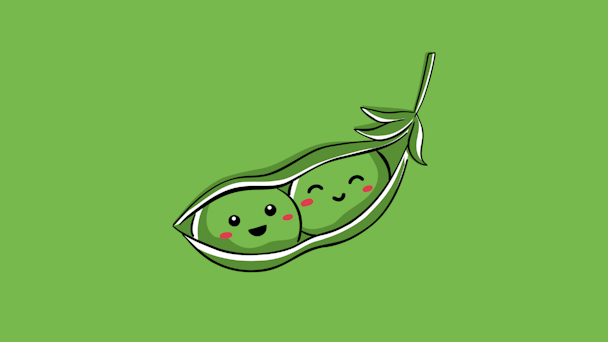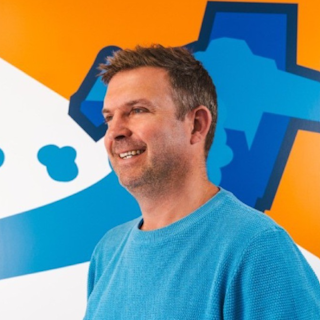To perfect a non-profit partnership think Shell X Greenpeace... then do the opposite
Harry Lang, VP of marketing at game developer and publisher Kwalee, explores how the perfect partnership can benefit non-profits, brands and consumers equally. It’s not as easy as it sounds.

It was 1999, and a baby-faced Harry was taking his first tentative steps in marketing (excluding several unpaid internships, of course). The National Maritime Museum in Greenwich was one of my early clients.
Many a blissful afternoon, I was wandering between the Queen’s House on the Thames and the Royal Observatory (home of the famed Harrison clocks that solved the riddle of longitude), where you cross the Greenwich Meridian - the international date line. I would give a passable tour to clients who had bought into my then-boss’s concept of selling a ‘Prime Meridian’ brand marque before the Millennium. The concept was simple - the Meridian was where the new epoch would officially begin, so partner brands could make hay during the party that was 1999.
Inspired by this non-profit/brand partnership success, I delved into further opportunities for what became known as ‘cause marketing’, designing a model I called the ‘Three Pointed Star’ to define the potential benefits for each party.
It was about identifying a great fit and maintaining a shared commitment and balanced equity for both parties. The cause and the brand must share a common mission and objectives, and the audience (media and customers) must feel that the union is appropriate and not disingenuous.
To visualize best practices, let’s first lay out the worst-case scenario: imagine Shell partnering with Greenpeace. If you can’t envisage your brand and charity partner ‘fit’ at the opposite end of that scale, then the match isn’t likely to work.
Advertisement
That brings us to 2020. Starbucks famously partnered with Mermaids, the transgender charity, for its #WhatsYourName campaign. It was hailed as a groundbreaking success because the campaign played off the coffee chain’s known tactic of writing a customer’s name on their cup. Starbucks aimed to reinforce its inclusivity and demonstrate how retaining a chosen name could be detrimental to a non-binary or transgender young person. In the ad, a transgender boy puts his chosen name on a cup rather than his ‘dead name.’ Regarding predictive success, the fit was appropriate, the execution sympathetic, and the believability of the partnership was genuine.
Recently, we developed a partnership with a non-profit partner for our PC and Console game, Wildmender. The game sees players restore life to a dying world and restore the altars of five Gods with the help of a guiding spirit. It works with themes of natural cycles, environmental damage, restoration, and harmony with nature. The garden nurturing and environmental protection message will educate young gamers about their impact on the planet and what they could do to help save it.
So one afternoon, I reached out to Marco Maggiorotto, global brand marketing director at the Rainforest Alliance, over LinkedIn with a simple proposal:
Hi Marco,
Sorry for the unsolicited message. I work at Kwalee, a games business in the UK. I had an idea for a partnership opp that would benefit Rainforest Alliance in visibility and fundraising.
Would you be open to sharing your email so I can explain more?
Harry
Within 24 hours, we’d had a productive meeting, and within 48 hours, we had a verbal agreement on a partnership proposal - a meeting of minds - and missions. The game’s core premise almost perfectly matched the strategic objectives of the Rainforest Alliance. The partnership was clearly beneficial to all. The Rainforest Alliance benefitted from the relationship via fundraising and increased exposure to a young gaming audience in numerous media, including the unique downloadable Rainforest Alliance Frog Hat on Wildmender.com and the game’s social and community channels.
Advertisement
Both parties were keen to innovate in how they took their message to market; the purpose was clearly defined, the benefits equitable, and the rollout media plan was flexible enough to allow for an unplanned partnership campaign like this to be seamlessly inserted into other scheduled activity without any discernible disruption.
But then things got tricky.
Regarding the legalities around setting up such an arrangement, it was harder than we thought it would be, as we found to our cost.
If you ever want to build a formal cause marketing partnership in the USA in which the charity benefits financially from your sales (in our case, the $3 DLC hat), you need to register the brand and partnership in over twenty States. One. State. At. A. Time.
The legal costs on this alone could have deemed the partnership unviable, so we had to create a licensing arrangement with fixed contract terms. The supposed ‘Land of the Free’ is anything but if you’re a business trying to support a non-profit.
So, what does a bad one look like if that’s what it takes to craft a credible, legal and good brand/non-profit partnership?
The pink powderkeg
Step forward, ironic flat cap-wearing, sweary CEO platforming, ‘I’m Punk, me, cos I don’t give a sh*t’ beer brand, BrewDog. (I’m not a fan…)
In 2018, BrewDog wanted to gain free column inches by piggybacking the gender pay gap issue by launching Pink IPA - a ‘ladies only’ beverage that would have looked dated in the ’70s. The campaign stank of virtue signaling, purpose grandstanding, and tone deafness not seen since Russell Brand started his faux-Dickensian guttersnipe routine, spewing sesquipedalian brain farts like a vomiting thesaurus.
It was universally vilified as simplistic, insensitive and patronizing, taking a serious issue and pouring a pimped-up lager on its head. It didn’t help that BrewDog was successfully sued for sexual discrimination for refusing to sell the Pink IPA to a bloke.
Suggested newsletters for you
In this instance, none of the rules of a successful brand/non-profit partnership were followed. A passing conversation with any female-centric charity, and perhaps literally any charity whatsoever, would have filed the concept in the bin within minutes as a disaster in waiting. There was no equity in the benefits ascribed to the cause, and the execution was misdiagnosed, puerile, culturally appropriated cobblers.
Building a relationship between your brand and a fitting charity can be extremely beneficial for everyone involved. Just make sure they and the audiences you represent can achieve a meaningful win, too.
You can find him at @MrHarryLang on X and connect with him on LinkedIn. And if you want to make him really happy, you best download that rainforest hat DLC in Wildmender and make those sleepless nights pay off.

